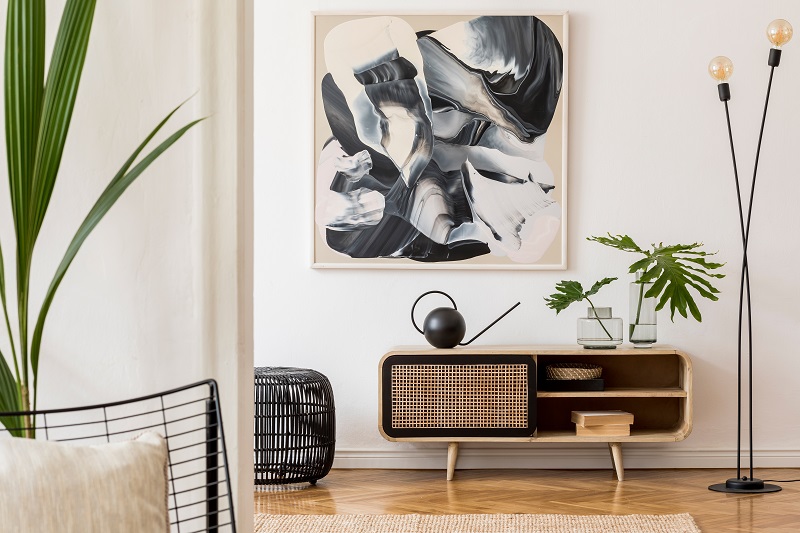Curating Art for Tall Walls: A Guide for Photographers
For professional photographers, the concept of curating art for tall walls presents a unique set of challenges and opportunities. The expansive canvas that tall walls offer can be both a daunting and exhilarating prospect. With the right approach, these walls can be transformed into stunning visual narratives that captivate the viewer and showcase the photographer's work in an extraordinary way.
When aiming to create a compelling display, understanding the dynamics of lighting, scale, and composition is crucial. This article delves into the key considerations for photographers when curating art for tall walls, offering insights that ensure your photographic art not only fits the space but also enhances and enriches it. Let's explore how you can capitalize on the vertical dimensions to create a striking and engaging art display.

The Importance of Scale and Proportion
When dealing with tall walls, scale and proportion become critical. As a photographer, your challenge is to select images that can command the space without overwhelming it. Large-scale prints are often the go-to choice, as they can fill vertical areas effectively. However, it's not just about size; the composition and subject matter must also complement the wall's dimensions. Consider using a mix of large and small pieces to create a dynamic and balanced display.
An effective strategy is to break down the wall into smaller segments and treat each as a separate canvas. This technique allows you to maintain focus and create a flow that guides the viewer's eye naturally across the images. You can find more about designing effective layouts in our article on photo wall arrangement tips.
Lighting: The Unsung Hero of Art Display
Lighting plays a pivotal role in showcasing art, particularly on tall walls where shadows and highlights can dramatically alter the perception of your work. Natural light can be a tremendous asset, but it needs to be managed carefully to prevent glare and fading. Consider the direction and intensity of natural light throughout the day and supplement it with strategically placed artificial lighting to highlight key pieces.
Spotlights and track lighting are popular choices for illuminating tall walls. They can be adjusted to focus on specific works, adding depth and texture to the display. For more insights on creating the perfect lighting for your photo walls, check out our tips on designing photo walls for workspaces.
Choosing the Right Frames and Mountings
The choice of frames and mounting techniques is another critical aspect of art curation for tall walls. Frames can accentuate the art or provide a subtle border that blends seamlessly with the wall. Consider the aesthetic of the room and the mood you wish to convey. Sleek, modern frames work well in contemporary settings, while ornate, traditional frames may suit a more classic interior.
For a minimalist look, consider frameless mountings such as gallery wraps or float mounts. These options allow the art to stand out without any distractions. Additionally, ensure that all mountings are secure, especially for larger pieces, as this is crucial for both safety and preservation of the artwork. For more advice on this topic, explore our guide on installing large art securely.
Creating a Narrative with Your Art
One of the most compelling aspects of curating art for tall walls is the opportunity to tell a story. As a photographer, you can use your art to weave a narrative that engages viewers on multiple levels. Consider the journey you want the viewer to take and how each piece contributes to that story. This approach not only makes the display more cohesive but also more memorable.
Mixing different genres or themes can add layers to your narrative. For example, pairing landscape photography with portraits can create intriguing juxtapositions that invite closer examination. To see how mixing themes can enhance a space, read our post on combining floral art with photo walls.
Conclusion
Curating art for tall walls is an art form in itself, demanding a blend of creativity, technical knowledge, and a keen eye for detail. By considering scale, lighting, framing, and narrative, photographers can transform these expansive spaces into captivating galleries that highlight their artistic vision. For those ready to embark on this journey, remember that the possibilities are as limitless as your imagination.
For additional inspiration and ideas, you might find value in exploring large wall art concepts on platforms like Pinterest, where diverse examples can spark new ideas for your own curations.

FAQ Section
How do I choose the right size for my artwork?
Consider the dimensions of your wall and the viewing distance. Larger spaces can handle bigger pieces, while smaller walls or spaces require more modest sizes. A good rule of thumb is to fill two-thirds to three-quarters of the wall space.
What lighting is best for displaying photography?
Natural light is ideal but often needs to be supplemented with artificial lighting. Adjustable spotlights or track lighting can help highlight specific pieces without causing glare.
Can I mix different art styles on the same wall?
Absolutely! Mixing styles can create a dynamic and engaging display. Be sure to maintain a visual theme or color palette to keep the arrangement cohesive.

